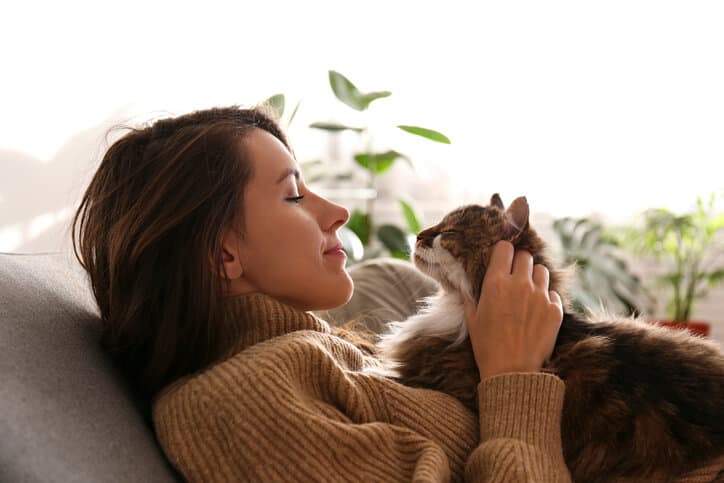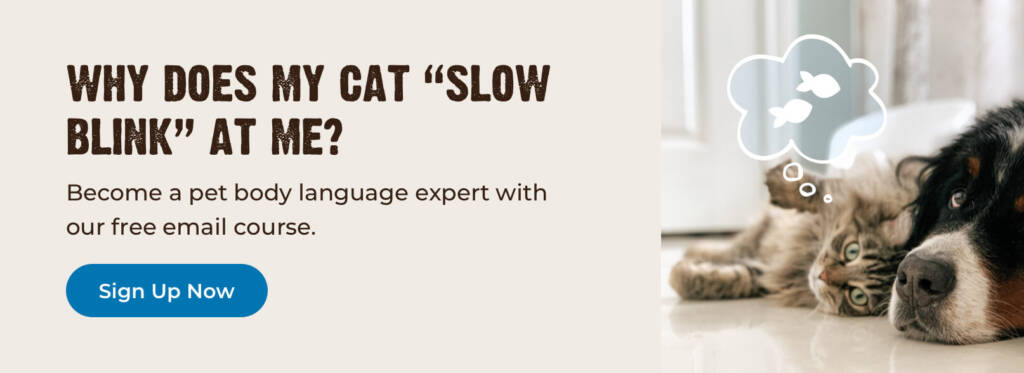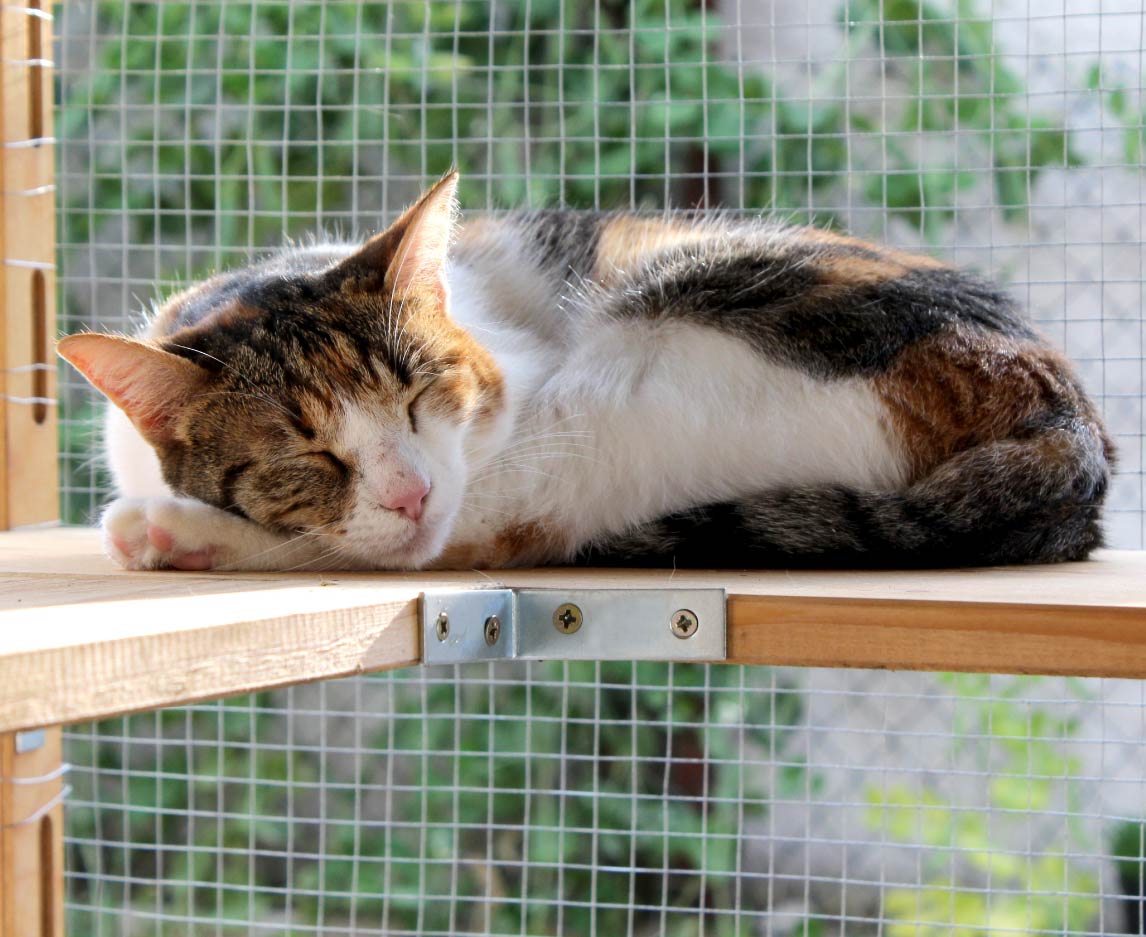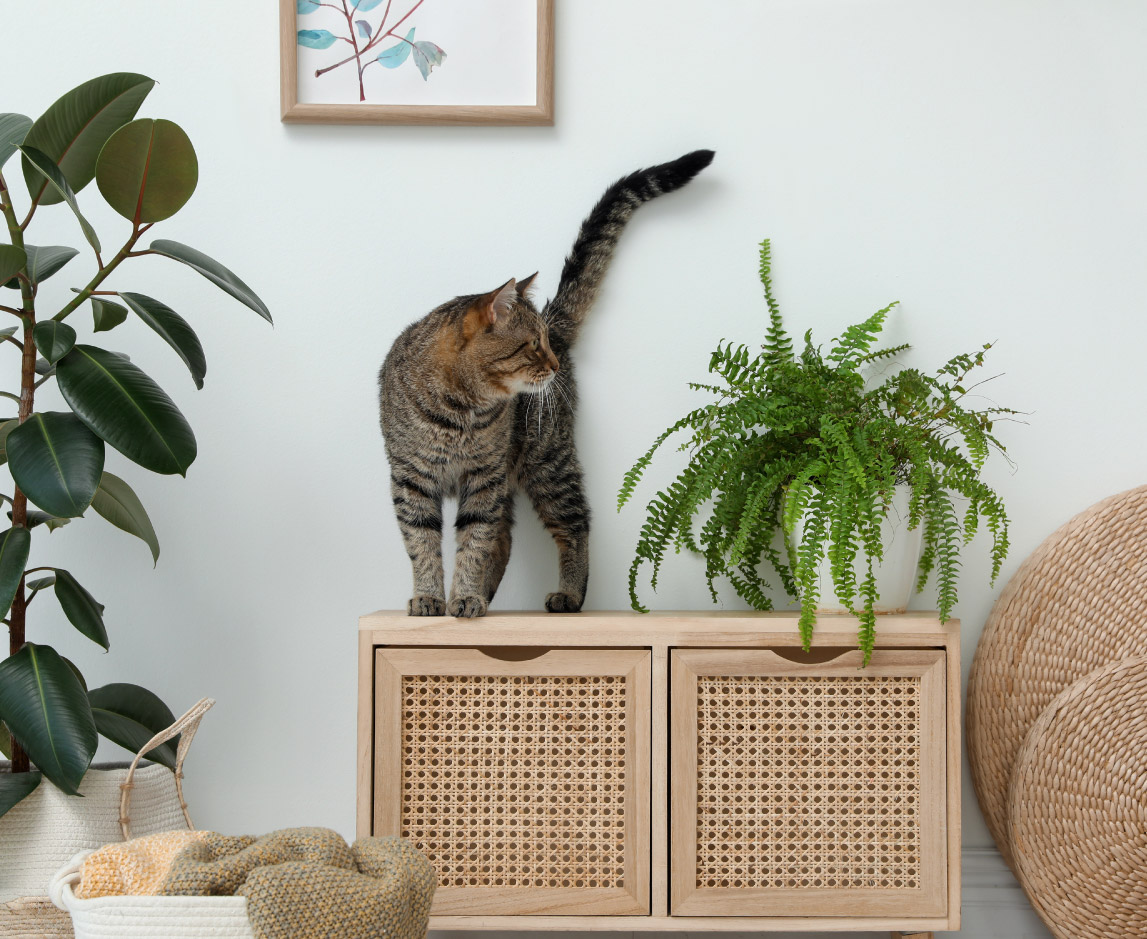It’s a source of controversy among so-called “dog people” and “cat people.” Popular opinion seems to maintain that dogs are more loving and loyal than cats — but ask anyone who lives with a cat, and they’ll tell you cats can absolutely express affection.
Just like us, each cat will have a different way of showing affection toward its humans. But there are some easily recognizable behaviors that almost all cats display to convey fondness, and maybe even love.
Signs That Your Cat Loves You
1. Follows You Around
This is a clear sign your cat likes you — or at least knows you are the source of their food. Cats who receive lots of affection from their humans associate them with positive interactions and may follow them from room to room (including the bathroom) in pursuit of more.
2. Sleeps Near or With You
If your cat hops into bed with you every night and snuggles against you, it’s a clear sign they enjoy physical closeness. Even cats who are nervous around humans or don’t enjoy physical affection will often sleep near their people, since they may feel safest when their human is lying down and don’t pose as much of a threat.
3. Slow Blinking
Though eye contact can sometimes be read as a threat, happy cats will make steady eye contact with lowered lids and squeeze their eyes shut to express contentment. Try “slow blinking” back at your cat to return the gesture.
4. Kneading
This behavior has many names: “making biscuits,” “kneading bread” and “happy paws” are just a few. Cats will flex and push their paws alternately against soft surfaces — including your skin — when they are especially happy. The behavior is carried over from kittenhood, when kittens knead their mothers’ abdomens to stimulate milk flow.
5. Meowing, Purring & Trilling
Did you know that cats only meow to communicate with humans? Cats have little need to communicate with each other verbally, but many cats learn that meowing at humans triggers a response, whether that’s food, treats, a pat or an open door.
Anyone who spends time with a cat knows they’re anything but quiet. Cats make a range of other noises, including purring (a rhythmic throat rumbling), trilling (a high-pitched chirp) or chattering (usually when they’re watching prey). Meowing, purring and trilling are special signs of your cat’s connection to you — they’re trying to tell you they like you! Be aware, however, that cats may purr to soothe themselves when they are stressed or sick, so pay attention to context.
6. Showing Their Belly
Their stomach is a cat’s most vulnerable spot, so if they’re comfortable exposing their belly around you, that means they feel safe. Sometimes, if they’re feeling frisky, a cat might roll over and expose its belly during playtime (the classic “cat trap” maneuver) — but be careful of their claws!
7. Tail Tip Twitching & Wrapping Tail Around You
Cat tail behavior is a language unto itself. The way a cat holds its tail can tell you a lot about its mood in any given situation. If a cat runs toward you or weaves around you with a high, twitching tail, it generally means they’re very happy to see you. They may also wave their tail back and forth in wide, curving motions as an extra show of excitement.
When seated or lying next to their human, a cat may wrap its tail around their person’s closest body part in a show of warmth and affection.
8. Headbutting & Rubbing Against You
Apart from a show of physical closeness, cats like to rub their faces and heads on people and objects they wish to claim as their own. Cats have scent glands in their foreheads, lips and cheeks that only other cats can smell, so they are essentially marking whatever they rub against as their property. When they rub against their owners, they may also be picking up your scent in a show of “scent-sharing,” a common behavior among cats who are close.
9. Grooming
Cats are experts at cleaning themselves and rarely need help. Grooming and fur-licking between cats, therefore, is a sign of affection and comfort, since it can remind them of when they were kittens. Cats will lick their people as a sign of ownership, and some allow their humans to brush them in return. If a cat is licking you, be aware if they get a wild look in their eye — licking may lead to biting (see #12), which is another odd, if painful, way to express attachment.
10. Greeting You at the Door
Children, spouses, dogs — most of our co-habitants show their appreciation for our return by greeting us when we come home. Cats are no different, and many will run to the door when they hear their favorite person’s keys or footsteps approaching. Be prepared for meows, head butts and perhaps lots of weaving in between your legs. Whether they’re happy to see you or they’re trying to tell you their food bowl is empty, that’s up to you to decide…
11. Brings You Presents
Cats are natural hunters, and some unfortunate side effects of this instinctual behavior are the bodies of mice and birds that might end up on your front steps. Outdoor cats will attempt to bring their humans freshly killed “presents” as a sign of goodwill and pride — they are both showing you what they can do and trying to feed you. Indoor cats sometimes mimic this behavior by “hunting” and depositing their toys in front of their humans.
12. Love Bites
As we mentioned above, sometimes a cat’s affection can become a little too intense. Cats have naturally sharp teeth and claws, and they are not always aware of the pain these can cause their people. When a cat rubs its face against you repeatedly, watch that they don’t transition to inflicting “love bites.” Even though these bites are softer than a defensive bite, they still have the capacity to leave marks and are a behavior that should be gently discouraged.
Tips for Interpreting Cat Behavior
Just like humans, cats can express their emotions very differently from one another. One cat can express affection through enthusiastic purring and rubbing against your legs, while another may simply sit and blink slowly at you from across the room.
As always, context is key. You can encourage positive behavior from your cat by providing a safe, comfortable environment for them to relax and play in. If they are comfortable with their surroundings, it’s easy to interpret cats’ affectionate behavior as just that!
However, if an unfamiliar person, animal or object enters their safe space, cats may become unsettled and will potentially display more assertive behaviors, even toward their favorite person. Hissing or swatting are easy behaviors to interpret as stress or displeasure, but look for other signs of unease. For example, cats sometimes purr to soothe themselves if they are sick or scared; if your cat starts purring during a thunderstorm or while receiving flea medication, they may be trying to calm themselves down.
This is a prime example of one behavior meaning different things in different contexts. Always pay attention to the larger picture to get a true sense of what your cat is feeling. Pupils, whiskers and posture are all visual indicators of mood — read our blog post about how to read cat body language here.
The Great Debate: Are Dogs More Loving Than Cats?
Dogs convey affection for their people by wagging their tails, licking, panting with their tongue out and even jumping up on their hind legs. Even people mildly familiar with dogs recognize these signs of a happy dog. Many cats, on the other hand, have much more subtle ways of showing their adoration, some of which are barely discernable or downright invisible to humans.
Mikel Delgado, a cat behavior expert with Rover, explains. “Cats can have a lot of the same emotions that we do, including liking to be around us and enjoying our presence,” she says. “I believe they are capable of enjoying relationships with us and even loving us.”
While there is great debate over whether animals feel love, animal researchers can say that cats often form attachment bonds with their humans, and some more readily than others. An attachment bond is a comforting, often affectionate relationship to another individual. Cats express attachment through a desire to be near their humans, purring, rubbing against them, kneading and watching their every move. But, unlike with dogs, this cat–human bond can be conditional.
For example, dogs are much more likely to form unconditional bonds with their owners, so much so that when they are punished, they display something like remorse and will persist in regaining their owner’s affection. If a cat is punished or scolded for disruptive behavior, they are much more likely to display apparent resentment or grudge-like body language, an attitude from which some cats never return.
“I believe cats are very sensitive to punishment from their owners,” says Valarie V. Tynes, a veterinary services specialist. “Punishment or harsh treatment seems to be more likely to damage the bond between the human and cat.”
Katherine Pankratz, a board-certified veterinarian, agrees. “If that trust is broken, there may not necessarily be no more love,” she says, “but the ability to express that behavior may differ or vary with those sorts of [negative] experiences or influences.”
If all is well between you and your cat, they may be apt to express anxiety or lethargy when you leave. A social cat who is left alone for long periods may hide, yowl incessantly or even relieve themselves on their owner’s belongings. In general, though, cats have adapted to be much more socially flexible than dogs, which is why cats are often viewed as independent or cold.
To ensure a cat is accustomed to and even affectionate toward humans from a young age, it’s best to start socializing them when they are young. Before they are ready for adoption at 12 weeks old, shelter kittens who are headed to new homes should have plenty of human interaction to become used to the sounds, smells and textures they’ll encounter among people. It’s more difficult to socialize an older cat who has had limited exposure to humans, such as a feral or barn cat. However, with patience and an understanding of feline behavior, an unsocialized cat may become tolerant or even comfortable around humans.
If you are trying to get a cautious cat to like you, don’t force it. Let the cat’s behavior and body language guide your interactions, including letting them approach you first. All cats like to be the ones in charge of social situations, so if you let them lead the way, you’ll likely have a positive — if not downright affectionate — interaction.
FAQs
Q: Why does my cat meow constantly?
A: Cats typically only meow to communicate with humans, but there can be dozens of different reasons. Cats meow to get people’s attention, to greet them, to warn them of their increasing irritation or to tell them something is wrong. Cat owners come to know what different types of meows mean, but always pay attention to frequent, unusual or urgent meowing. This may be a sign your cat is sick or injured and needs to see a vet right away.
Q: Why does my cat bite me?
A: Depending on the context, cats can bite their people for many reasons. If a gentle bite is accompanied by lots of head butting and rubbing, it’s a “love bite”: your cat is expressing affection and marking you as their territory. Cats may also get carried away during playtime and resort to biting and kicking. Never punish a cat that uses its claws and teeth during playtime, but do gently discourage the behavior and avoid overstimulating your cat.
If a cat seems angry and threatened, they will often bite a person as their last line of defense. Cat saliva can carry bacteria, so if you sustain a cat bite that breaks the skin, wash it with soap and water right away, bandage it and keep an eye out for signs of infection.
Q: Why does my cat follow me into the bathroom?
A: Cats love to be near their favorite people and often follow them wherever they go. If a cat is left on the other side of a closed bathroom door, they may “fish” their paws under the door to see what they can grab. A closed door is a source of immense curiosity for a cat — especially if they know their human is behind it.
Q: Why is my cat staring at me?
A: While humans might consider staring rude, cats stare at their people to communicate with them. They might stare to indicate their food dish is empty, to express affection, to stay on high alert or simply because they enjoy watching you go about your business. If the stare is accompanied by slow blinks, that signals contentment.
Q: Why does my cat sit on my computer?
A: Cats love warmth and being the center of their human’s attention. They associate laptops and computer keyboards with both, which is why it’s sometimes difficult to keep your cat away from your computer while you’re using it. A few ways to cat-proof your laptop include using a laptop stand, keeping the door of your work area shut, closing your laptop when it’s not in use and providing plenty of other things for your cat to do elsewhere.







